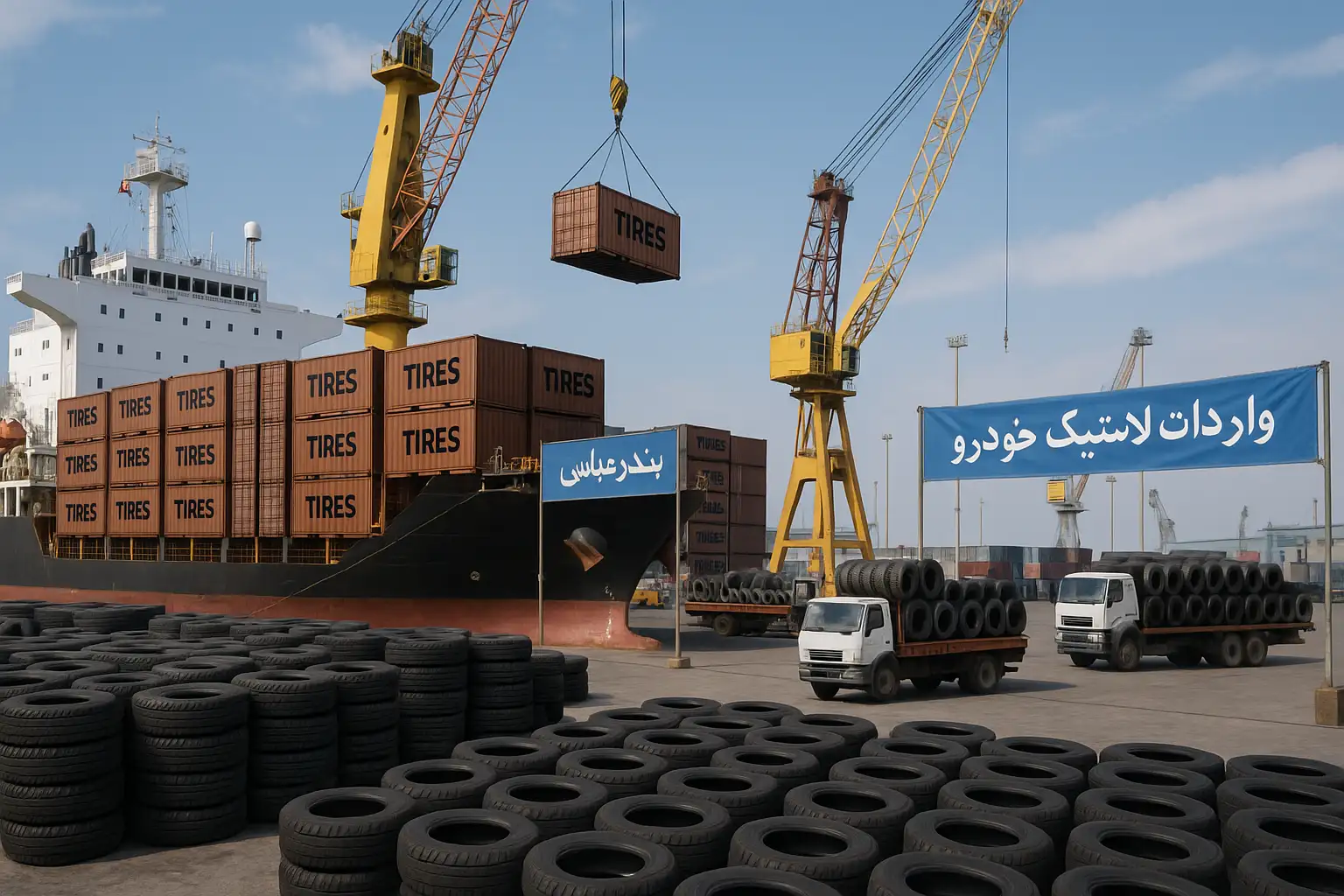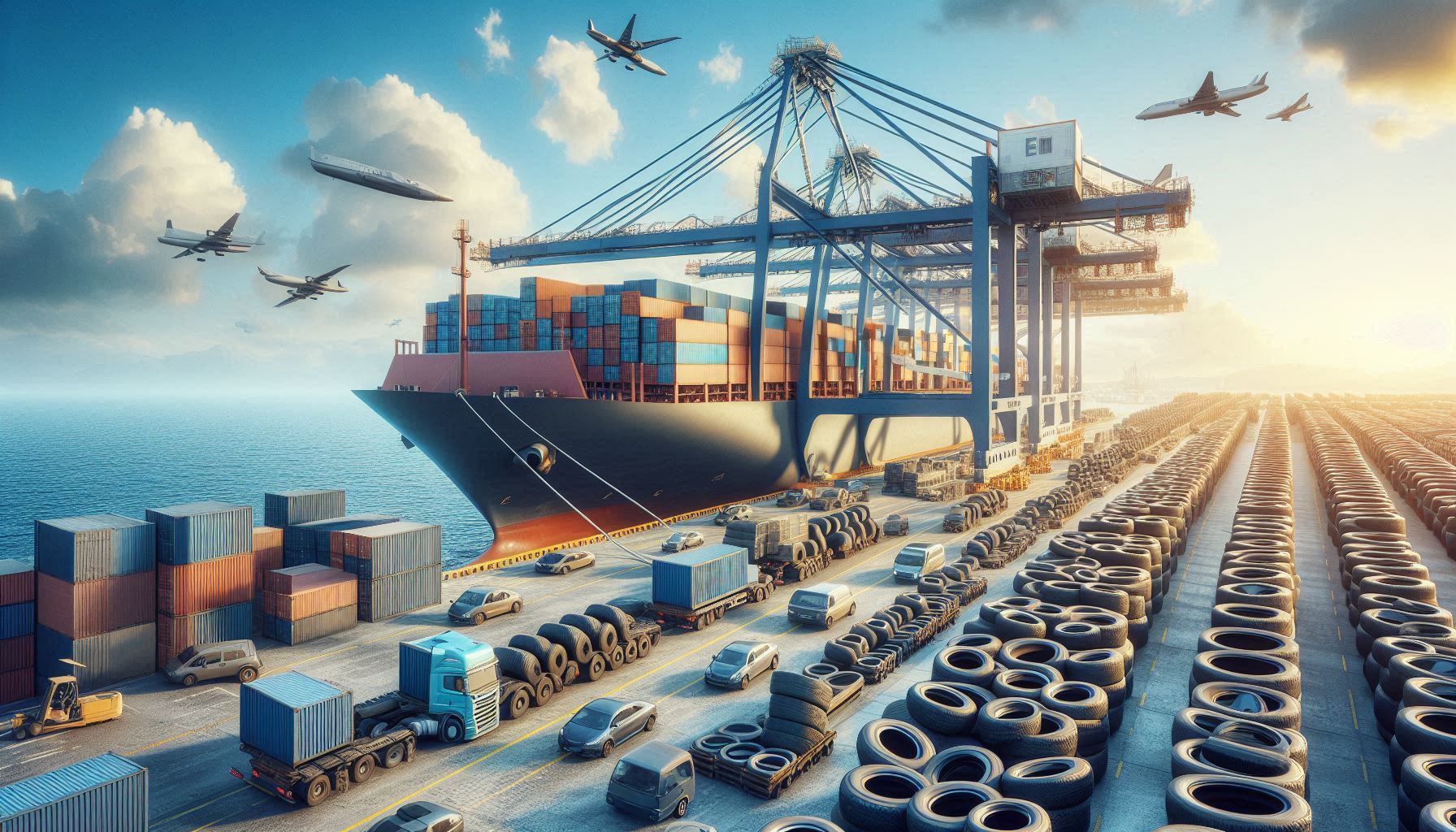
Introduction to Car Tire Import
Car tire import is a significant topic in Iran’s transportation industry, foreign trade, and after-sales automotive services. Given the country’s diverse climatic conditions, varying road quality, and consumer needs, the variety of imported tire brands and types has gained particular importance. Moreover, due to limited domestic production and the inability of some Iranian factories to fully meet market demands, tire imports have become an undeniable necessity.
This article comprehensively examines the tire import process, relevant regulations, advantages and disadvantages, supplier countries and brands, and conditions in both domestic and global markets. Additionally, useful information is provided about order registration, technical standards, tariffs, and selecting a credible importer.
Importance of Tire Imports in the Domestic Market
The Iranian domestic market annually requires millions of tires, including passenger car tires and those used in industrial, agricultural, and heavy-duty sectors. Although domestic producers cover part of this demand, factors such as:
-
Insufficient domestic production capacity
-
Limited product diversity
-
Inferior technology compared to international manufacturers
-
Sanctions affecting technology and raw materials
have necessitated importing a significant portion of tires to meet market demands.
[Click here to read more about the importance of tire imports.]
Role of Imports in Price and Quality Control
Imports not only increase product diversity but also enhance market competitiveness. The presence of international brands provides consumers with more choices, prompting domestic producers to strive for higher quality.
Dependency on Imports in Commercial and Transportation Sectors
A significant part of the country’s transportation fleet relies heavily on imported tires, especially in heavy-duty, road construction, and mining segments. Brands such as Michelin, Bridgestone, Hankook, and Triangle are favored due to their high durability.
Classification of Imported Tires
The imported tire market is highly diverse. Understanding the classifications accurately helps importers, consumers, and technicians make informed choices.
Passenger Car Tires (Radial/Bias)
Designed for passenger cars, SUVs, and crossovers. Key features include:
-
Tread types: symmetric, asymmetric, directional
-
Structure: radial (most common), bias (older type)
Popular imported brands:
-
Continental (Germany)
-
Kumho, Hankook (South Korea)
-
Giti (Singapore)
-
Nexen (South Korea)
Heavy-Duty Tires (Trucks, Industrial)
Widely used in transportation, construction, and agriculture sectors. These tires feature robust structures, reinforced sidewalls, and special technologies such as Run-Flat or steel-reinforced radial designs.
Van and Minibus Tires
Positioned between passenger and heavy-duty categories, popular brands include:
-
Linglong (China)
-
Apollo Tyres (India)
-
Double Coin (China)
These brands are widely used due to their affordability and durability.
Technical Considerations and Quality Standards
Adhering to international technical specifications and quality standards is essential for safety, efficiency, and product longevity. Evaluating these factors during order registration and purchasing from foreign manufacturers is crucial.
National and International Standard Marks
Under Iranian National Standard Organization regulations, all imported tires must meet national or internationally recognized standards, such as:
-
ECE (Economic Commission for Europe)
-
DOT (U.S. Department of Transportation)
-
ISO/TS 16949 (Automotive Quality Management)
-
Iran’s National Standard Mark
Tires lacking these certifications are classified as unauthorized or smuggled and cannot clear customs.
Specifications: Size, Load/Speed Rating, Production Date
Each tire includes critical information:
-
Size (e.g., 205/55R16) indicating width, aspect ratio, rim diameter
-
Load code (e.g., 91) and speed rating (e.g., V) specifying maximum load and speed
-
Production date (e.g., 1424): 14th week of 2024
-
Treadwear, Traction, Temperature ratings: indicating durability, grip, and heat resistance
Neglecting these details may lead to technical issues, reduced tire lifespan, or accidents.
Legal Procedures for Car Tire Import in Iran
To legally import car tires into Iran, importers must follow a clearly defined procedure complying with customs and foreign exchange regulations.
Order Registration and Currency Allocation (Governmental/NIMA)
The official import procedure starts with order registration in the Integrated Trade System, including:
-
Inputting technical details
-
Selecting origin country and manufacturer
-
Obtaining necessary approvals (standardization, environmental, transport)
-
Determining currency source (government-subsidized, NIMA rate, free market)
In recent years, most importers have utilized the NIMA rate, which is between subsidized and free-market rates.
Customs Clearance and Related Costs
Once shipments arrive at Iranian ports, customs clearance requires documents such as:
-
Approved order registration
-
Commercial invoice and packing list
-
Certificate of origin and standard
-
Port warehouse receipt and bill of lading
Customs fees include:
-
Import duties (typically 5-15%)
-
Storage fees
-
Laboratory and standard organization service fees
Delays or discrepancies in documents can significantly increase costs and processing times.
Impact of Tariffs and Protective Policies
Tariffs significantly influence imported tire costs. Governments may adjust tariffs to support domestic producers or regulate market prices.
Smuggling and Informal Imports
Due to high tariffs or complexities in formal import processes, many tires enter the market informally or through smuggling, posing risks such as:
-
Non-compliance with standards
-
Lack of warranty
-
Expired or recycled products
Supporting Domestic Production and Import Restrictions
To protect local industries, certain foreign brands may face import restrictions. Such policies should carefully balance market needs, domestic production capacity, and consumer requirements to avoid shortages or price surges.
Global Market and Supplier Countries
Iran imports tires from multiple countries, each offering distinct advantages regarding tire type, pricing, quality standards, and currency accessibility.
-
Turkey: Preferred due to geographical proximity, competitive quality adhering to European standards, with brands like Petlas, Lassa, and Starmaxx.
-
China: Largest tire exporter to Iran, known for diverse brands and competitive pricing (Linglong, Triangle, Chaoyang, Double Coin).
-
South Korea, Thailand, Taiwan: South Korea (Kumho, Hankook, Nexen) is highly trusted; Thailand manufactures international brands at lower costs, while Taiwan specializes in industrial and agricultural tires (Maxxis).
Advantages and Disadvantages of Imported Tires
Quality and Durability
-
Pros: Advanced technology, global standards, superior performance under adverse conditions
-
Cons: Some imported tires, especially counterfeit or smuggled, may lack quality or compatibility
Price and Accessibility
-
Pros: Broad price ranges, access to global brands
-
Cons: Currency fluctuations directly impact pricing, availability issues due to import restrictions or sanctions
Selecting a Credible Importer and Purchase Considerations
Due to market saturation, choosing a reputable supplier is essential.
-
Verify warranty with official hologram
-
Ensure detailed written agreements (brand, size, production date)
-
Insist on delivery to official warehouses with legitimate invoices and certificates of authenticity
Maintenance and Replacement Tips for Imported Tires
Proper tire maintenance ensures safety, longevity, and efficiency:
-
Regular wheel alignment and balancing (every 6 months or after 10,000 km)
-
Appropriate tire pressure based on vehicle specifications and weather conditions
Outlook for Imported Tire Market in Iran
With limited domestic production and increasing demand, projections indicate:
-
10-15% annual growth in passenger tire imports
-
Higher imports of SUV and crossover tires (17-inch and above)
-
Expansion of eco-friendly tire segments
New government trade and taxation policies are expected to ease imports from partner countries and enhance anti-smuggling measures through digital tracking systems.
Key Role of Tire Imports in Meeting Domestic Needs
Tire imports significantly support Iran’s transportation infrastructure by ensuring stability and preventing seasonal shortages.
Challenges include currency fluctuations, customs bureaucracy, presence of low-quality brands, and sanctions, highlighting the importance of professional importers like Keyhan Matin Gharan.
Keyhan Matin Gharan: A Reliable Tire Importer in Iran
Keyhan Matin Gharan is an experienced importer, renowned for directly sourcing high-quality tires from reputable international brands, providing nationwide distribution, professional logistics, and extensive after-sales support.
FAQ
-
Are special licenses required?
Yes, including standardization and environmental approvals. -
Best supplier countries?
South Korea and Turkey due to quality and accessibility. -
Do imported tires have warranty?
Yes, credible importers provide official warranty certificates. -
How to identify tire production date?
Four-digit code on tire sidewall (week/year).
Conclusion
Car tire importation in Iran is not only economically essential but ensures safety, quality, and market dynamics. Compliance with regulations and choosing credible suppliers allows cost-effective and professional fulfillment of market demands. Proper maintenance significantly enhances tire lifespan and vehicle safety.

